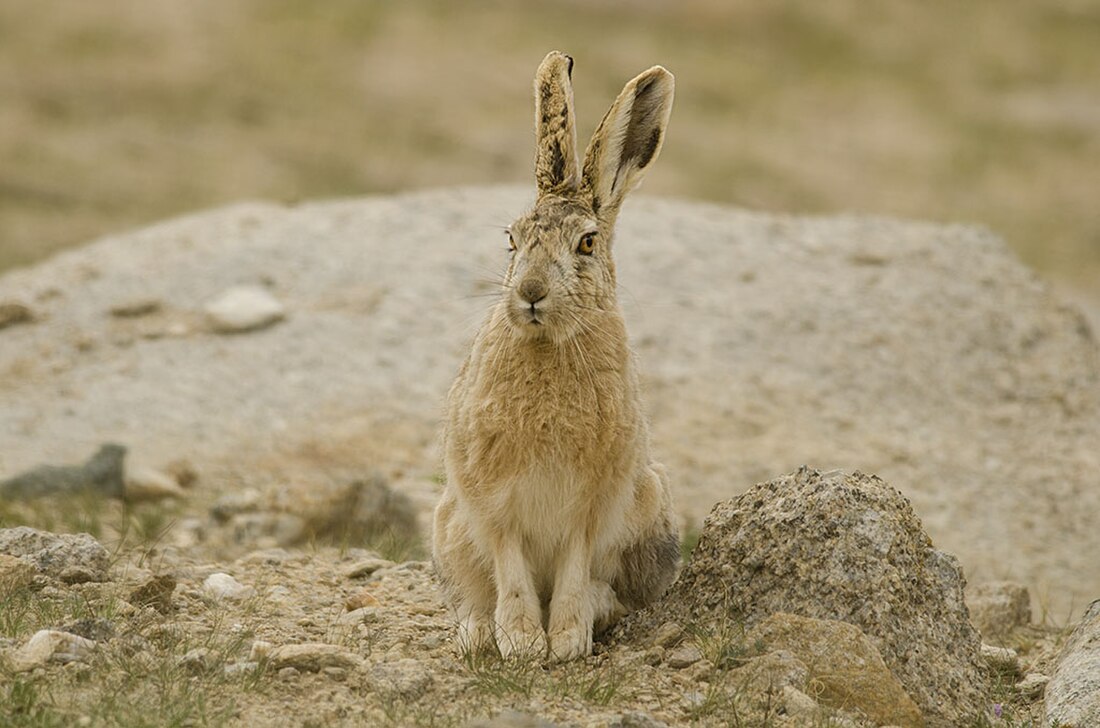Top Qs
Timeline
Chat
Perspective
Woolly hare
Species of mammal From Wikipedia, the free encyclopedia
Remove ads
The woolly hare (Lepus oiostolus) is a species of mammal in the family Leporidae.[2] It is found in western and central China, northern India, and Nepal, where its typical habitat is montane grassland. It has a wide range and is present in some protected areas but is a generally uncommon species; the International Union for Conservation of Nature has assessed its conservation status as being of "least concern".
Remove ads
Description
The woolly hare's thick and soft fur ranges from sandy yellow to dark yellowish brown. Abdominal fur is mostly white and can have a light brown line along the mid-ventral line. Notably, the buttocks can range from brownish‐gray to silvery‐gray and are noticeably lighter and grayer than the rest of the body. Tail white above except for a brown-gray narrow stripe on the dorsal surface, and white below. Muzzle elongated and narrow. Grows to a length of 40 to 58 cm (16 to 23 in). The coat is moulted just once a year.[3][4]
Remove ads
Distribution and habitat

The woolly hare is native to Central Asia. Its range extends from northern Nepal, and Jammu and Kashmir and Sikkim in India, to western and central China, where it is present in the provinces of Gansu, Qinghai, Sichuan, Tibet, Xinjiang and Yunnan. The habitat of this hare is mainly high altitude grasslands of several types; Alpine meadows, shrubby meadows and upland cold deserts, but it also occurs in coniferous or mixed montane woodland. Its altitudinal range is from 3,000 to 5,300 m (9,800 to 17,400 ft) above sea level.[1][3]
Remove ads
Ecology
The woolly hare is a shy and usually solitary animal, and although sometimes active by day, it is mostly nocturnal. It feeds on grasses and herbs, with individual animals returning regularly at night to the same foraging areas. During the day it sometimes rests in the sun in a sheltered position. The breeding season starts in April, with two litters of between four and six young being produced each year.[3]
Status
The woolly hare has a wide range but is a generally uncommon species, and its population is described as "very low except in a few favoured areas". It is hunted for its meat and fur, and in some areas suitable habitat is being destroyed, resulting in fragmenting of populations and the inability of individuals to make local migrations. In Nepal and China it is present in some protected areas. Overall, the International Union for Conservation of Nature has assessed its conservation status as being of "least concern" but in India it is considered "endangered".[1]
Remove ads
References
Wikiwand - on
Seamless Wikipedia browsing. On steroids.
Remove ads



